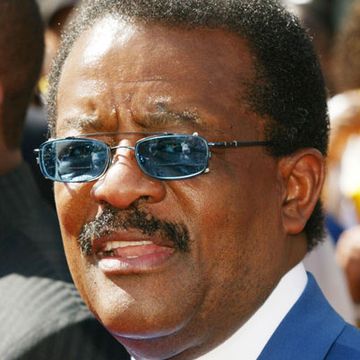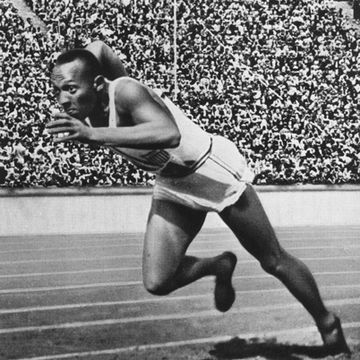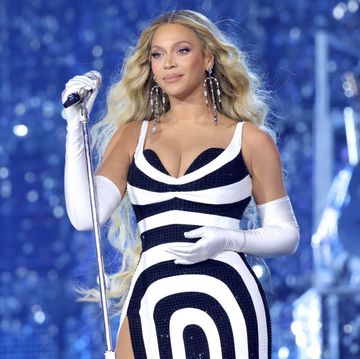From her earliest days, Bessie Coleman had the ambition to soar above the conditions of segregated small-town Texas at the turn of the 20th century.
Fresh off the backbreaking hours in the cotton fields, she would discreetly slip her foot on the scale beneath the day's haul to squeeze a few more pennies out of the foreman.
At 18, she left for the Colored Agricultural and Normal University in Langston, Oklahoma, despite having only enough money to last one semester.
At 23, she joined two of her older brothers in the big city of Chicago, where she trained as a manicurist and befriended the power players of the South Side's thriving African American community.
But it wasn't until she endured the teasing of one combat-veteran brother, who ribbed her about the superiority of French women who knew how to fly planes, that Coleman found a calling worthy of her sky-high ambition.
Coleman journeyed to France for flight training
As detailed in Queen Bess: Daredevil Aviator, the would-be pilot reached a dead end when it came to finding someone willing to train an African American woman. Undeterred, she took French lessons to apply to one of the country's progressive flight programs, and set sail for Europe in November 1920.
At the Caudron brothers' aviation school in Le Crotoy, Coleman trained on a rickety biplane that required careful inspection before each flight. Occasionally unable to understand her instructor, she bridged the communication gap by feeling the movements of steering system that connected the front and back cockpits.
After becoming the first Black woman to receive a pilot's license from the Fédération Aéronautique Internationale, Coleman made a triumphant return to the States in September 1921. However, there were few professional opportunities available for pilots, save for those who engaged in stunt flying, so she soon returned to Europe for training in loop-the-loops, barrel rolls and other aerial tricks.
READ MORE: Bessie Coleman and 9 Other Black Pioneers in Aviation
She talked the talk to build up her reputation
Bessie performed her first air show in Garden City, New York, in September 1922, its success leading to engagements in Memphis and Chicago the following month.
Having hustled her way to prominence, Colemen understood the importance of a carefully tailored appearance and self-promotion. Known as "Queen Bess" or "Brave Bess" in the press, she cut an impressive public figure with her long coat, leather boots and Sam Browne officer's belt, and often embellished her credentials during interviews.
But there was no need to exaggerate her pride in her race, as she talked openly about opening a flight school for African Americans. It was this same pride that caused her to storm off the set of a movie based on her life story, over her refusal to play to "Uncle Tom" stereotypes.
Coleman crashed the first plane she owned
After months of tooling around in borrowed planes, Coleman finally had enough money to purchase a Curtiss JN-4 – known informally as a "Jenny" – from an Army depot in Los Angeles in early 1923.
Shortly afterward, she was en route to a show at a local fairground when the plane's motor stalled at 300 feet and plummeted to a crash landing. Despite sustaining a broken leg and fractured ribs, she pleaded with the doctor at the crash site to "patch her up" so she could continue with her scheduled engagement.
Grounded for the next year and a half, Coleman eventually found more sponsors and resumed regular performances by mid-1925. That August, she was accompanied by the first known Black woman to make a parachute jump. After this same parachutist backed out of another gig, Coleman strapped on the jumper's harness and did the deed herself.
By this point, Coleman had learned that she could consistently augment her earnings by giving lectures. She still yearned to open her own flight school, with the hope that a down payment on her next Jenny would get her one step closer to its realization.
Coleman fell from the cockpit during a test flight and died upon impact
Having obtained full ownership of the plane the following spring, Coleman prepared for a show in Jacksonville, Florida, as pilot William Wills delivered her prize from its base in Texas.
Wills arrived later than expected, as mechanical problems had prompted a pair of unscheduled stops. After touching down at Jacksonville's Paxon Field, other pilots cringed upon examining the Jenny's "poorly maintained" engine.
Nevertheless, Coleman was determined to press forward as usual, and she and Wills went out for a test flight on the morning of April 30, 1926. Her partner controlling the plane in the front cockpit, Coleman sat in the back, unbuckled, so she could easily scan the ground for good jumping sites.
According to witnesses, the plane suddenly accelerated and nose-dived, before flipping upside-down at about 500 feet. There was nothing to halt Coleman's fall from the cockpit, and the 34-year-old trailblazer was instantly killed upon hitting the ground.
Wills also died in the subsequent crash, and investigators soon discovered the loose wrench that had jammed the gears and caused the plane's uncontrollable behavior.
Her death was a footnote in white mainstream publications
Coleman's death was treated in a way that was fitting for the times. Wills, who was white, earned most of the ink in major publications, with the Florida Times-Union celebrating him for "teaching Bessie how to fly."
But the aviatrix received her due from the Black press, as well as a powerful send-off with memorial services in Jacksonville, Orlando and Chicago, the latter presided over by famed activist Ida B. Wells.
Coleman never achieved her stated goal, but she made her mark on those who also drew inspiration from the endless sky. In 1929, African American pilot William J. Powell established a flight school in her honor in Los Angeles, and in 1977, a group of female pilots based in the Midwest formed the Bessie Coleman Aviators Club.
She was eventually honored with her own postage stamp in 1995 and enshrined in the National Aviation Hall of Fame in 2006, long overdue recognition for a woman who was destined to never be forgotten.













